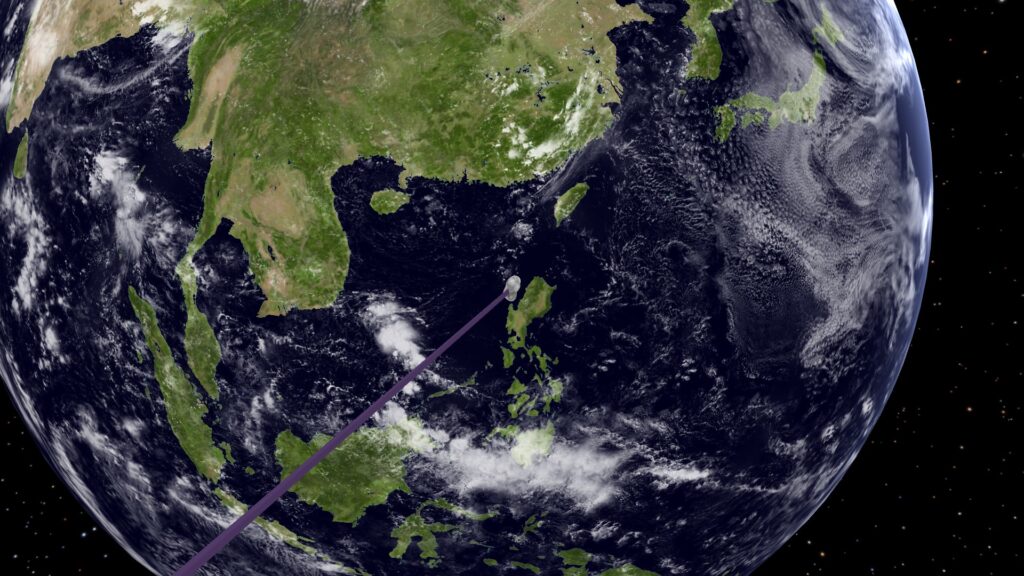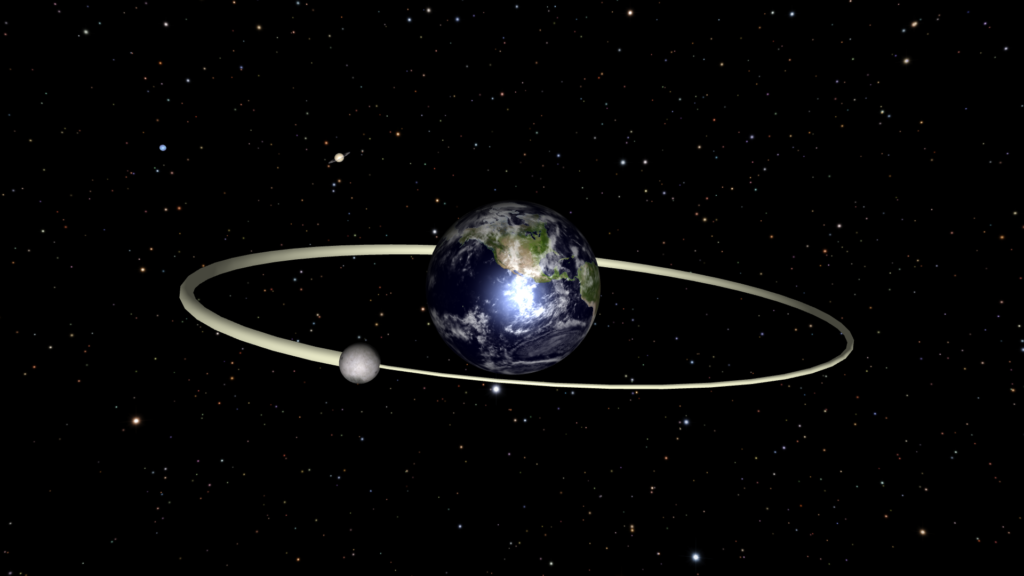Recently, a new small asteroid 2024 PT5 was discovered in the vicinity of our planet. The video shows its motion over the past few years in the orbit very close to the Earth’s one. The asteroid orbit relative to the Earth is also shown, which allows us to conclude whether it can be considered a temporary satellite of our planet.
The diameter of the object is about 8 meters. Its orbit is close to circular and very slightly inclined to the plane of the Earth orbit. The asteroid orbital period around the Sun was only 5% shorter than the Earth year. For this reason, the asteroid, while moving in its orbit, has been gradually catching up with the Earth over the past few years.
By the beginning of 2024, the asteroid had reached the vicinity of the Earth and began to experience gravitational disturbances due to being near the Earth–Moon system. On August 8, 2024, asteroid 2024 PT5 passed at a distance of 567 thousand km from the Earth, that is, one and a half times farther than the Moon. Its velocity relative to the Earth was 1.4 km/s, which is also only about one and a half times higher than the relative speed of the Moon. By the end of October, it will be 4 million km away, and then on January 8, 2025, it will get closer to Earth again, passing 1.8 million km from us.
Asteroid 2024 PT5 cannot be called our temporary moon. The Earth will noticeably distort the asteroid orbit, but its gravitational force will not be enough to close the trajectory. 2024 PT5 cannot even be called a quasi-satellite, since it and the Earth are not in orbital resonance 1:1. The period of the asteroid orbit around the Sun will, on the contrary, slightly exceed the Earth year. And with further motion in its modified orbit, it will begin to lag behind the Earth. The Earth will catch up with it from the other side in about 30 years, and in 2056 there will be another series of approaches, however, not so close.
Modeling and rendering were performed by author of this publication using own software. The calculations took into account the mutual influence of the Sun, all the planets of the Solar System,the Moon and the asteroid. Relativistic effects were also taken into account in the calculation. Throughout part of this video, the sizes of celestial bodies are shown to be greatly exaggerated compared to the distances between them.
The track Flow Down by Triple5 Here sounds in this video. This track was not changed. Attribution 4.0 International license.





